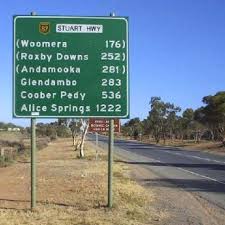Have you ever been behind the wheel of a car when you’re too tired to drive? Probably so – and if not, you can bet that other drivers around you have.
In fact, in a national Sleep Health Survey completed last year in Australia, 20 per cent of respondents admitted that they had fallen asleep at the wheel at least once. Of those, 5 per cent had had a car accident in the past year due to ‘drowsy driving’ or sleeping.
The truth is that drowsy driving causes thousands of car accidents each year, leading to countless motor vehicle accident claims and injuries.
Just how bad is it?
People often don’t realise when they’re too tired to drive, or how serious it is. According to the Sleep Health Foundation, if you drive after 17 hours without sleep, it’s as bad as driving with a blood alcohol level of 0.05 percent. If you drive after 24 hours without sleep, it’s as dangerous as driving with a blood alcohol level of 0.10 percent (double the legal limit).
And while drunk driving gets lots of attention and has many associated laws and penalties, drowsy driving does not. It’s not always easy to determine or prove which motor vehicle accidents are caused by drowsy driving, but in Australia, the total costs to the public are estimated to be $2 billion every year.
Preventing an accident
If you think you might be too tired to drive, you probably are. Sleep is a powerful biological need that you really can’t fight. If you have any of the following behaviours, it’s time to pull over and rest to avoid causing an accident:
- Trouble remembering the last few miles you’ve driven
- Drifting out of your lane
- Trouble keeping your eyes open or your head up
- Difficulty focusing on the road
- Missing exits, signs or traffic lights
The Centre for Road Safety for New South Wales recently put together an awareness campaign on drowsy driving, as well as a quick, interactive test, to help drivers check how tired they are prior to driving. Take a look at the “Test your tired self” videos and online quiz here.
What to look for
Think you’re driving next to or behind someone who’s falling asleep? Drowsy driving behaviours can be similar to those of drunk drivers, so look out for:
- Someone who’s ignoring traffic lights or signs
- A driver who weaves in and out of lanes or over the rumble strip
- Someone who’s yawning or blinking
Making a claim
Proving that drowsy driving caused an accident can be challenging. Thorough investigation by police and legal teams is often required.
If you were in a motor vehicle accident that you suspect was caused by a driver who was drowsy or who fell asleep at the wheel, try to remember and write down the details of what you saw as soon as possible.
If you have been involved in a motor vehicle accident caused by drowsy driving or have any questions about filing a claim, please contact us to speak with a member of our legal team.


